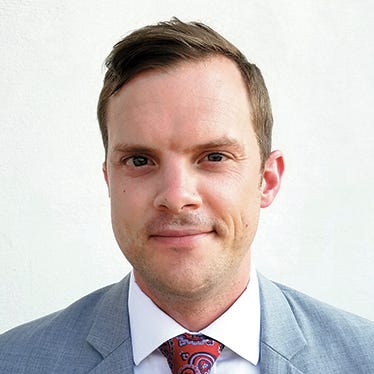Equity-Only Robo Opens to U.S. InvestorsEquity-Only Robo Opens to U.S. Investors
A former Scotiabank analyst and an economics professor are teaming up to launch a new robo. "We don't believe in ETFs," said the company's CIO.

The launch of equity-only robo Emperor Investments is an intriguing new chapter in automated investing. Not only does the product differentiate itself in a crowded market with its investment strategy, ignoring ETFs and instead making stock picks from a so-called “Dream Team” of dividend-paying equities, it’s designed for the long-term investor who has financial goals that are five years or more in the future. The company is specifically marketing itself toward investors who are high-earners-not-rich-yet, or HENRYs.
Currently the product, which charges an annual fee of 60 basis points on assets managed, is available for users able to meet the minimum investing threshold of $500. This August the firm expects to launch an advisor-focused product and a set of education videos, according to the company’s co-founders, CEO Brenna Casserly and CIO Dr. Francis Tapon, economics professor at the University of Guelph.
The portfolio design for the robo “combines the benefits of Mean-Variance Optimization and Fundamental Indexing,” per the firm’s white paper, into a “Predictive Blended Portfolio.” The model started as an equity portfolio available through Canada-based Investment Portfolio Design Limited, another venture that saw Casserly and Dr. Tapon working together.
“Ultimately we thought the best for our clients was to go directly to retail and charge a low cost,” explained Casserly. Because of regulatory restrictions in Canada, Emperor decided to spin the model into a U.S. robo offering after receiving seed funding in a Series A round 18 months ago. The 10-employee company is not disclosing its valuation or funding, but did note it needed to attract $30M in assets to reach breakeven.
While the model’s presentation and scale may be new, its principles are not—at least to Casserly and Dr. Tapon. They said they’ve been testing it with their own money for around a decade. “We’ve been managing this idea, using our own money, since the Great Recession,” said Dr. Tapon, “and we were surprised by how well our portfolios were doing. So, we felt we would do the same thing for more people.”
The robo picks select equities from a pool of 400 to 500 stocks that are re-evaluated every quarter. The portfolio is automatically rebalanced throughout the year, as necessary, but only automatically reallocated once per year according to the model and the pool of equities deemed worthy for inclusion.

Users will see the goal they want to get to and their current assets, as well as any withdrawals they’ve made and the fees paid. They can set up recurring deposits linked to outside accounts. In a competitive jab, one page shows a glide path using Emperor’s modeling compared to that of “other robos,” illustrating the advantage Emperor sees in its product.

Users with custom or multiple goals will be able to set up a different portfolio for each. There are also suggested goals in case a user is not sure for what they should be saving. Goals with more distant time horizons are subject to a higher volatility threshold, while those closer to today are designed to be less risky. The company does not suggest investing with it for goals that are less than five years away.
Tax-loss harvesting is provided by custodian Folio Institutional, and Casserly said the algorithm is designed to not trade “too much.” The maximum weighting for any single equity is 10 percent for users with a high volatility tolerance.
The bottom line is Emperor is positioning itself as a robo for goal-based investors who would rather own equities instead ETFs. “We look at ETFs as a black box,” said Casserly. “You open the black box and you’ll see some companies that you really do want to own and others not so much. And with our products, we have the ability, through our technology to pick great companies.”







